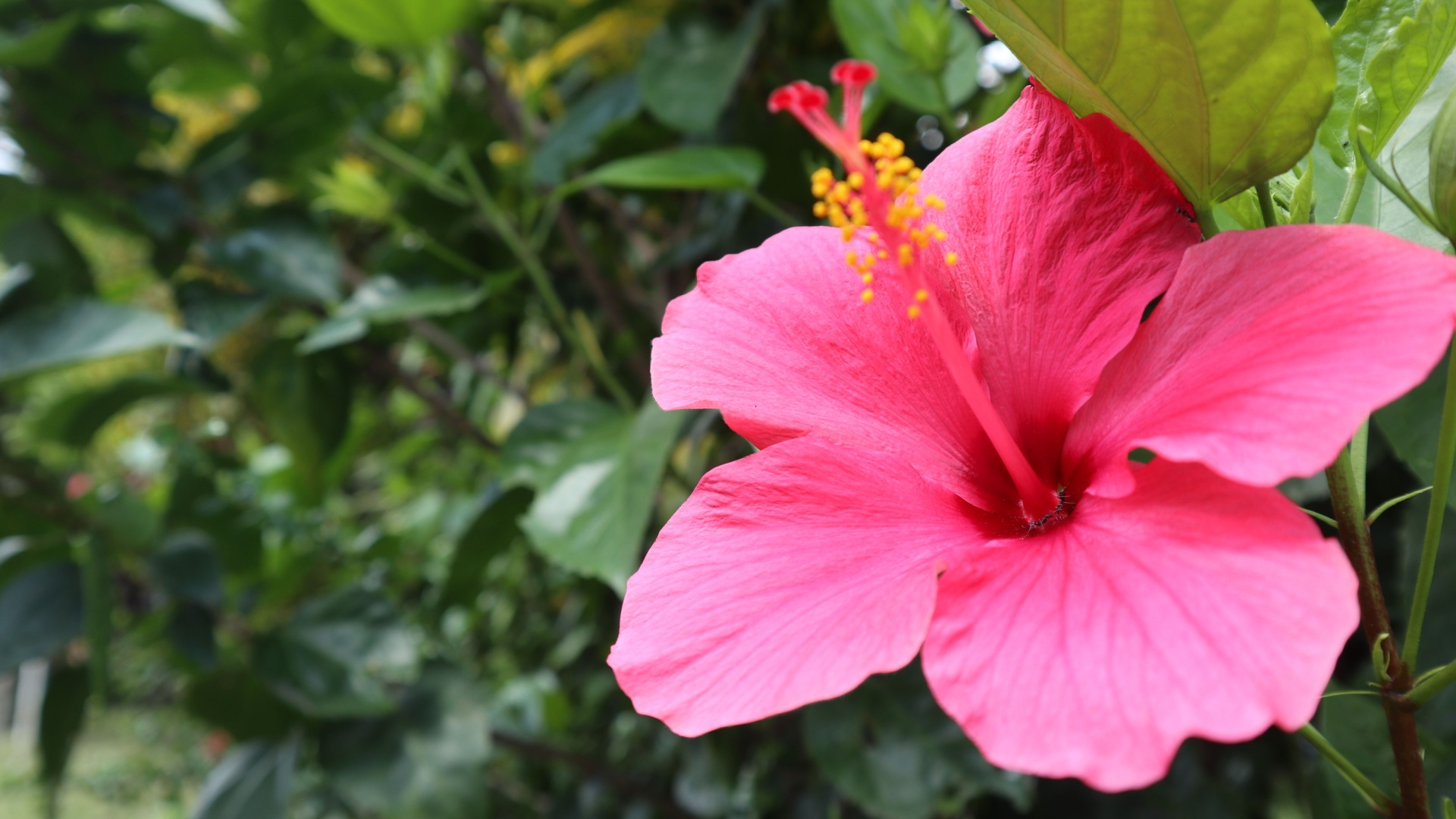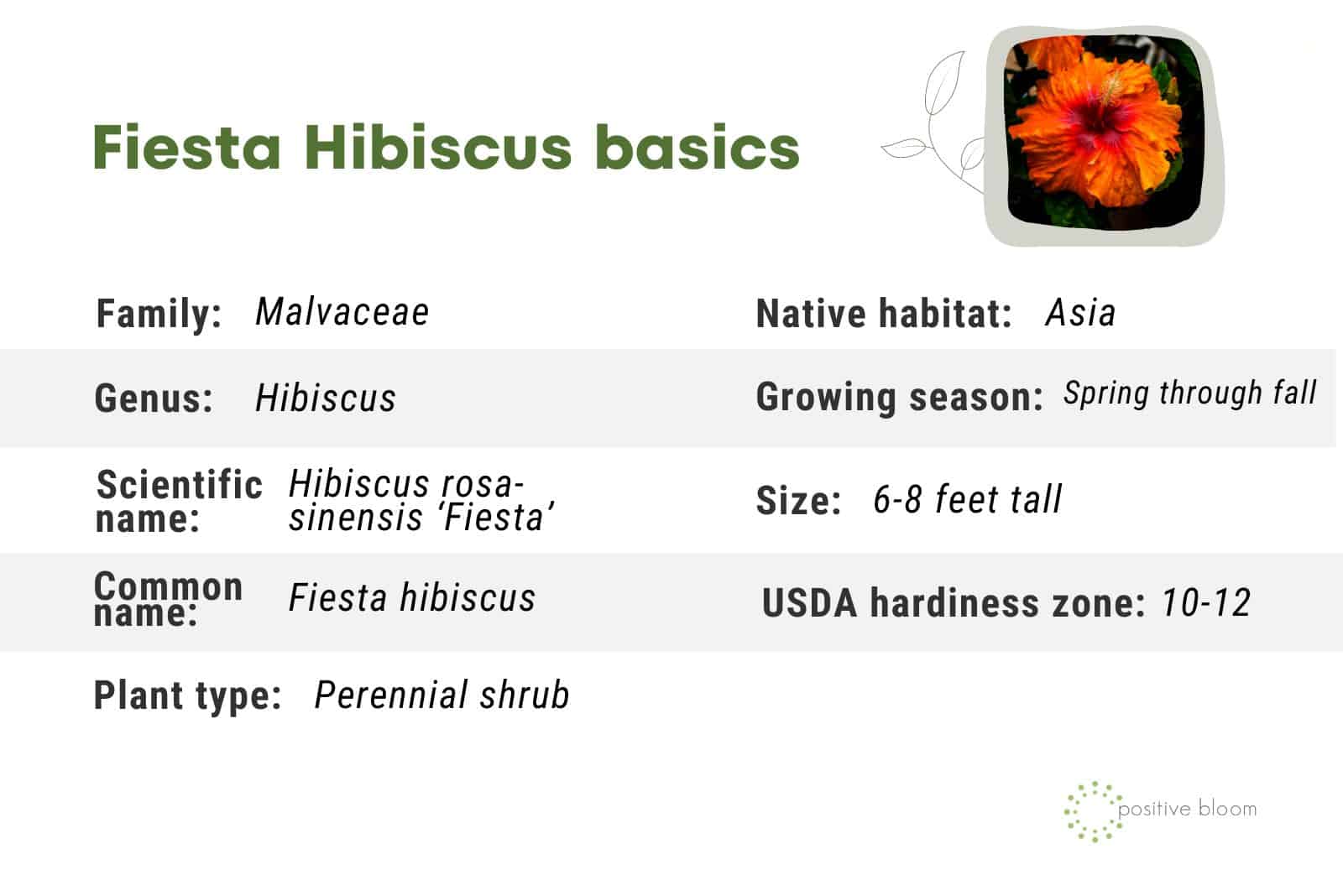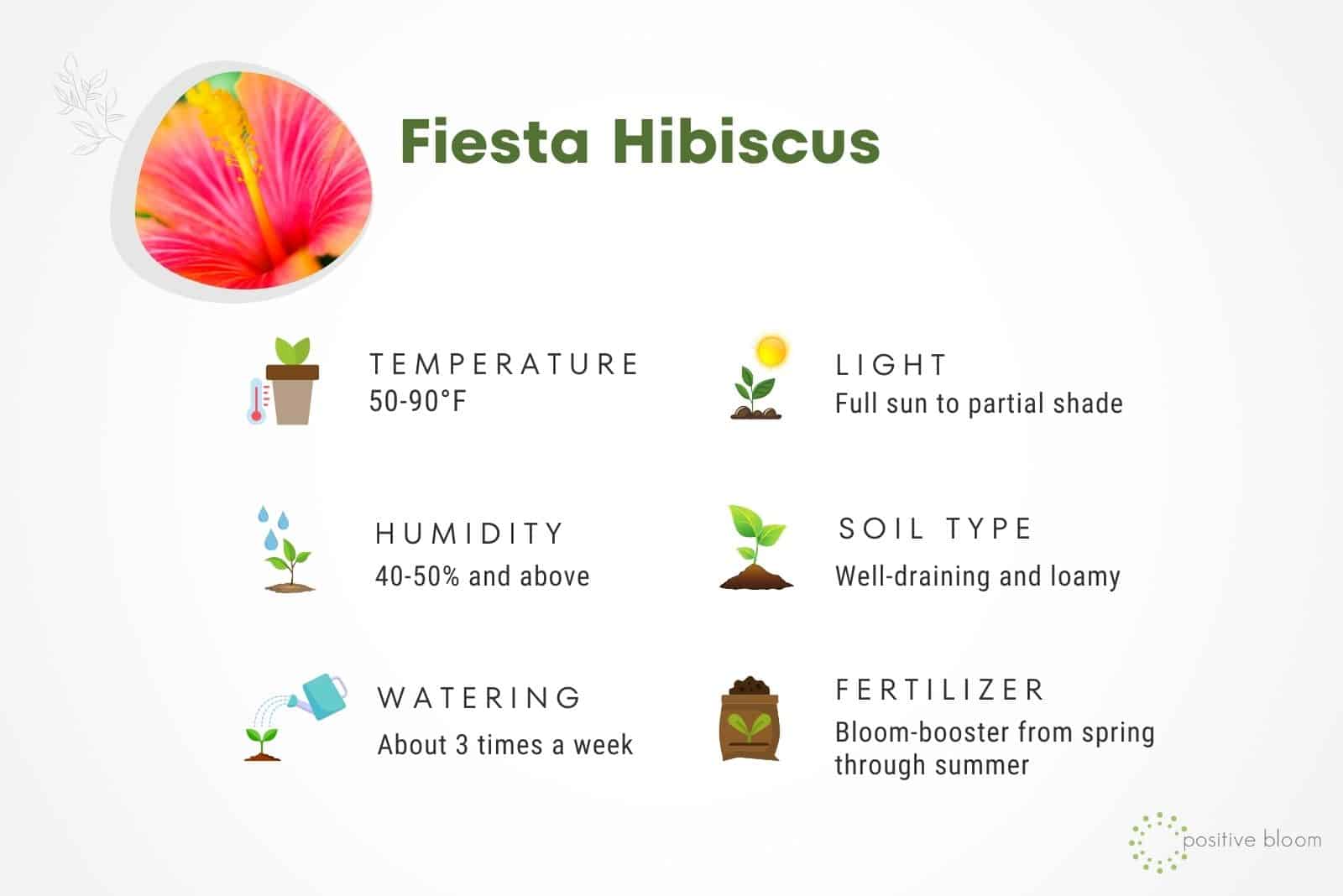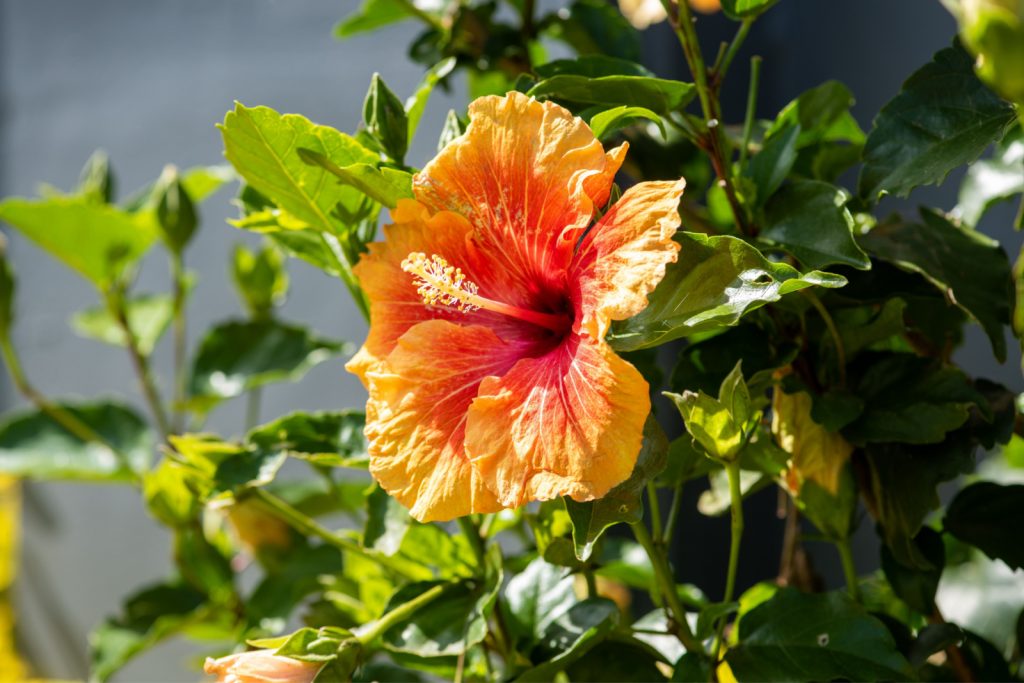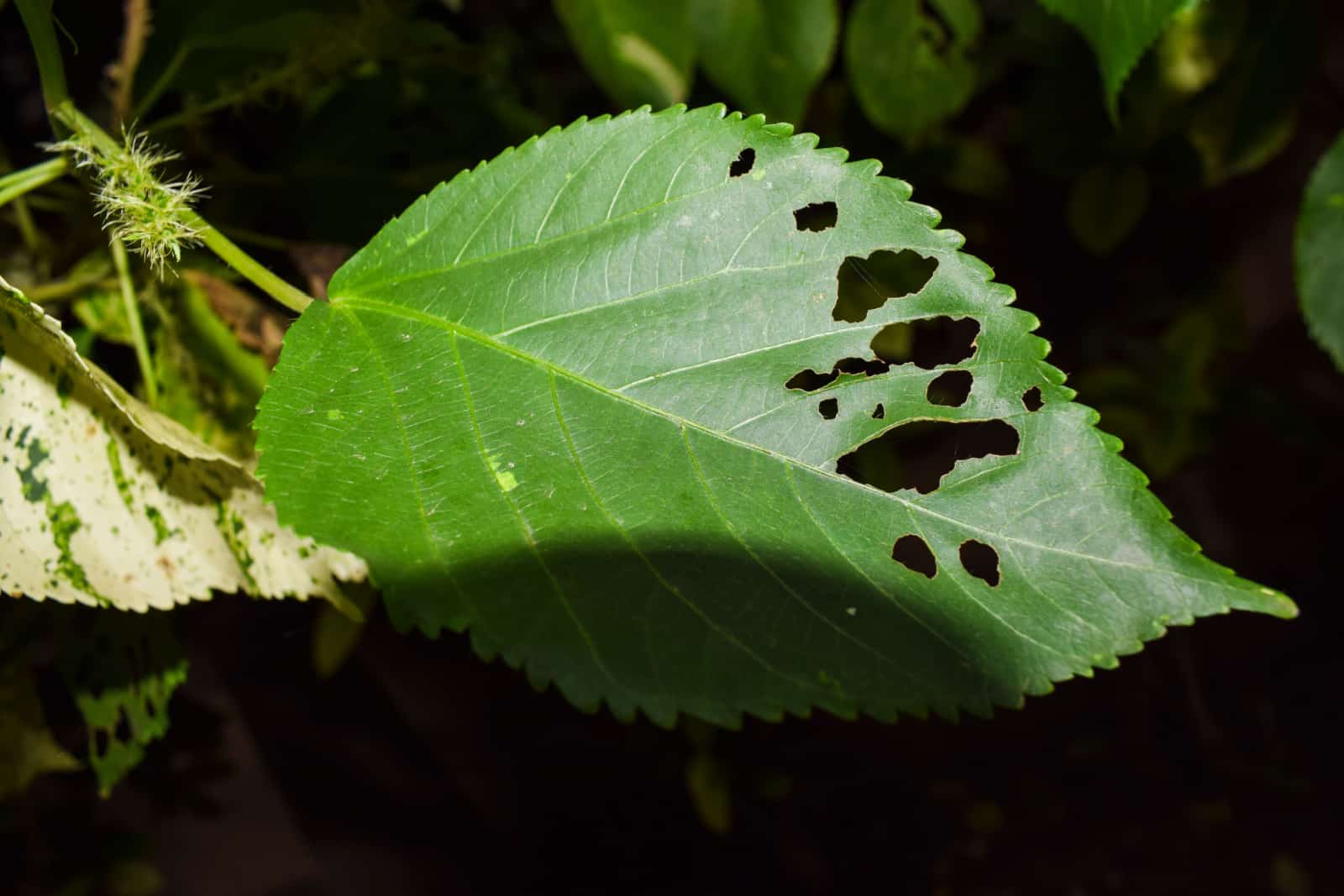Bringing a piece of the tropics to your home can do so much for your relaxation time and the landscape around you.
One of the things I do to achieve this is grow tropical plants in my backyard. They bring so much color and greenery to my landscape that I just want to sit back and sip a cocktail on a hot summer day.
And one plant that can bring about that feeling is the fiesta hibiscus. If its name doesn’t sell it, its breathtaking flowers surely will!
They start a fiery orange color, but as you look closer, you’ll notice a riot of golden rims blending with orange and eventually turning deep pink or red in the flower center.
What makes it perfect is that you can grow it indoors and outdoors with just a little bit of care. This article will discuss the best way to do it and even include a couple of tips for treating an unwell hibiscus.
Before we get to all that, let’s first learn some basics:
Fiesta Hibiscus Plant Care
The general hibiscus plant care guide teaches us that these plants require moist, well-draining growing mediums and sunny locations.
However, these are not the only things growers need to pay attention to, and you’ll find more useful information in the following sections, including the best fertilization method, some pruning tips, and more.
So, let’s get started!
Light Requirements
One of the things that I love most about this hibiscus is that it flourishes in various settings, so I don’t have to spend an entire day finding the best location for it.
It is quite enough to keep them in about six hours of direct sunlight each day in hot climates, which is why I place mine in the eastern corner of my backyard (although, southern ones work just as well).
But if you live in a colder region, you should expose it to more sunlight so that it can bloom profusely.
And if you want to grow this plant indoors, just place it near a sunny window where it can get a couple of hours of direct sun each day.
Water And Humidity
The fiesta hibiscus is a thirsty plant, just like the red heart hibiscus if you happen to have one of those, and you might even need to water it every 1-2 days, depending on the amount of rainfall your region gets.
Since I live in Florida, I usually water my in-ground hibiscus about three times a week, which works like a charm.
On the other hand, if you grow this plant in a container, you’ll need to adjust watering and irrigate your hibiscus about 1-3 times a week, depending on sun exposure, temperature, and soil density.
Of course, the weather conditions differ in different regions, which is why the best advice I can give you is to always check the soil mix with your finger before watering. If you feel it’s still damp, wait 1-2 days before irrigating again.
Water this plant even less frequently in winter since they go dormant and don’t require that much moisture. However, don’t withhold water completely since the moist soil can insulate the plant’s roots better and keep them warmer. (1)
Humidity
This tropical hibiscus requires moderate-to-high humidity levels, which is why you should always strive to keep it in environments where the relative air moisture is 40-50% and above.
When it comes to the in-ground shrub, there’s no need to raise the humidity since it’s usually suitable for it.
However, indoor plants require a bit more care since the air is drier inside. If your relative humidity is below 40%, consider getting a humidifier since that’s the surest way to increase air moisture levels.
Temperature
This hibiscus can thrive in temperatures from 50 to 90 degrees Fahrenheit, so you don’t have to worry about the indoor temperatures that much.
As for the outdoor conditions, temperatures below 40 degrees may result in frost damage, which is why you should take them to a location safe from the wind but still not particularly warm (such as a garage).
Since winter temperatures in Orlando aren’t that cold, I like to just mulch around my in-ground fiesta hibiscus with leaves, pine straw, or bark in order to keep the soil temperature more consistent.
And if temperatures suddenly plunge, I always have a snow cover at hand to wrap my shrub and protect it from harsh winter conditions.
Soil And Fertilizer
The soil requirements for almost every tropical hibiscus are virtually the same, be it the hibiscus Painted Lady, Fiesta, or some other cultivar – the growing medium needs to be a fertile, well-drained, loamy mix.
If you want to grow your hibiscus in a container, you can use a regular potting soil improved with some perlite or pumice (no more than 10% of the entire mixture). And if you want to go an extra step, you can add some earthworm castings to improve the fertility.
I personally planted this shrub in the ground, and all I did was add some compost to introduce more organic matter and improve the drainage of my garden soil.
Pro tip: If you’re afraid your substrate doesn’t drain well, you can build a small mound and plant your hibiscus on it or make a raised bed for this flowering bush.
Fertilizer
The best time to fertilize your hibiscus is in spring and summer since that’s when your plants put on new growth and can benefit from extra nutrients.
The best plant food you can give this flowering shrub is a bloom-booster, although I’ve had gardener friends who combine two different varieties.
For instance, they’ll use a 5-4-6 in March and July, and 3-15-10 in April, May, and June.
This technique will ensure that your bush develops plenty of vegetative growth that can photosynthesize and keep the plant strong and healthy, but will also result in an abundance of blossoms.
The key thing is to know when to stop. Plants cannot grow in their dormant state as there’s no more water movement inside the plant. The foliage dies and the plant stores all the sugars and nutrients in its roots to sustain it through the winter and help it grow in spring. (2)
Therefore, you should never fertilize this plant either during or slightly before its dormancy period since the plant won’t be able to use all the nutrients.
They might even burn its roots, or the plant will spend its energy pushing out new growth that’s too weak to survive the harsh winter conditions.
Repotting
The tropical hibiscus is an avid grower and can put on up to 2 feet of new growth in a year if conditions are perfect.
Therefore, you should repot it every 1-2 years or whenever you notice that it’s doubled in size and is too large for the current pot.
The next step is to choose a suitable container. Always go for a pot that’s 1-2 inches larger than the previous one since it won’t contain too much moisture.
I once had a potted hibiscus which grew like crazy, and I decided to repot it in a very large pot. Unfortunately, it quickly withered because too much moisture collected in the soil, which is why I always make sure that the planter is the right size.
I also choose bright terracotta pots with drainage holes (white, beige, light gray, etc.) since they ensure proper drainage and keep the plant roots cool during hot summers better than plastic and dark ones, which aids plant growth. (3)
Finally, all that’s left to do is put some potting mix into the planter, place your fiesta hibiscus in it, and cover it with more soil. Since these are thirsty plants, I water them immediately after repotting.
Pro tip: Loosen the roots a bit before potting if the plant is pot bound.
And if you need more help repotting your tropical hibiscus, here’s a great video that can help you:
Pruning
Since this tropical hibiscus is a fast grower, you should prune it regularly to maintain its shape, give it a clean appearance, and even encourage growth.
The best period for heavy pruning is at the end of winter or the beginning of spring. This marks the start of the growing season, and your plant won’t waste much energy putting on new growth.
The best way to prune the fiesta hibiscus (or any other member of the same species, including the hibiscus Peach, Cherry Nectar, Two Step, etc.) is to remove half its growth.
This method will help you train your shrub to grow in a particular manner and encourage branching, making it bushier.
For instance, you can shape it into a block if you want it for your hedge, a circle if you want to add more texture to your garden, or a tree to make a real statement piece.
When trimming a hibiscus shrub into tree-shape, simply remove the bottom branches and shape the crown however you like.
Propagation
The best and easiest way to propagate the fiesta hibiscus is through stem cuttings, and that’s what we’ll discuss in this section.
I prefer propagating it in water, but you can also place it in a potting mix if you wish to try that technique as well.
Step 1. Find some healthy hibiscus branches and cut them into 5-6 inch pieces. Remove the tips, buds, and lower leaves to aid this process.
Step 2. Place the cuttings in a glass vessel filled with lukewarm water and expose them to indirect light.
Step 3. Replace the liquid every couple of days to keep it fresh and prevent the spread of bacteria and fungi.
Once you notice that the cuttings have developed a root system, you can repot them into a small pot and the same potting mix you use for your other hibiscus plants.
Common Issues With The Fiesta Hibiscus
Some growers claim that this hibiscus is susceptible to pests, others less so. My experience with this issue was somewhere in the middle, meaning there weren’t any pests as long as the plant was completely healthy.
Therefore, I’ll discuss some common hibiscus pests and diseases, as well as possible treatments to help you save your shrub from diseases and give it a new lease of life.
Pests
The most common insects that infest the Fiesta hibiscus are mealybugs, aphids, thrips, and spider mites (the last ones in particular).
Luckily, you can easily get rid of all these bugs by spraying some neem oil or insecticidal soaps on them.
However, you can also avoid dealing with pests if you take care of your plant properly by avoiding overwatering, keeping it in a sunny location, and not overfertilizing it.
Diseases
There are a couple of diseases that infect hibiscus plants, such as leaf spot, powdery mildew, botrytis blight, etc., but the most common one is definitely root rot.
It is caused by overwatering, which is why you should avoid it at all costs.
When your fiesta hibiscus is infected with root rot, it will exhibit symptoms such as yellowing of the foliage, which will also begin to die off, and slow growth.
If you notice these signs, check your plant’s roots and remove the ones that are dark and mushy (healthy roots are usually white and firm).
Then repot your hibiscus into fresh soil and a clean container. You can use the old pot if it’s the right size for your plant, but remember to wash it thoroughly to destroy all the fungi.
Afterwards, give your hibiscus a day or two without watering, and apply more moisture once you see that the plant has started to droop a bit (but don’t wait too long).
Final Thoughts
The fiesta hibiscus is a gorgeous shrub that you can plant in your garden or a container.
It requires plenty of light and water, a well-draining and fertile growing substrate, and some bloom booster fertilizer for the abundance of blossoms.
It is an avid grower, so you’ll have to repot and prune it regularly, but once it opens its colorful blooms, you’ll see it was all worth it.
I also included a couple of tips and tricks for dealing with and preventing pest and disease issues so that you can keep your plant healthy.
Until next time!
[sp_easyaccordion id=”18867″]

